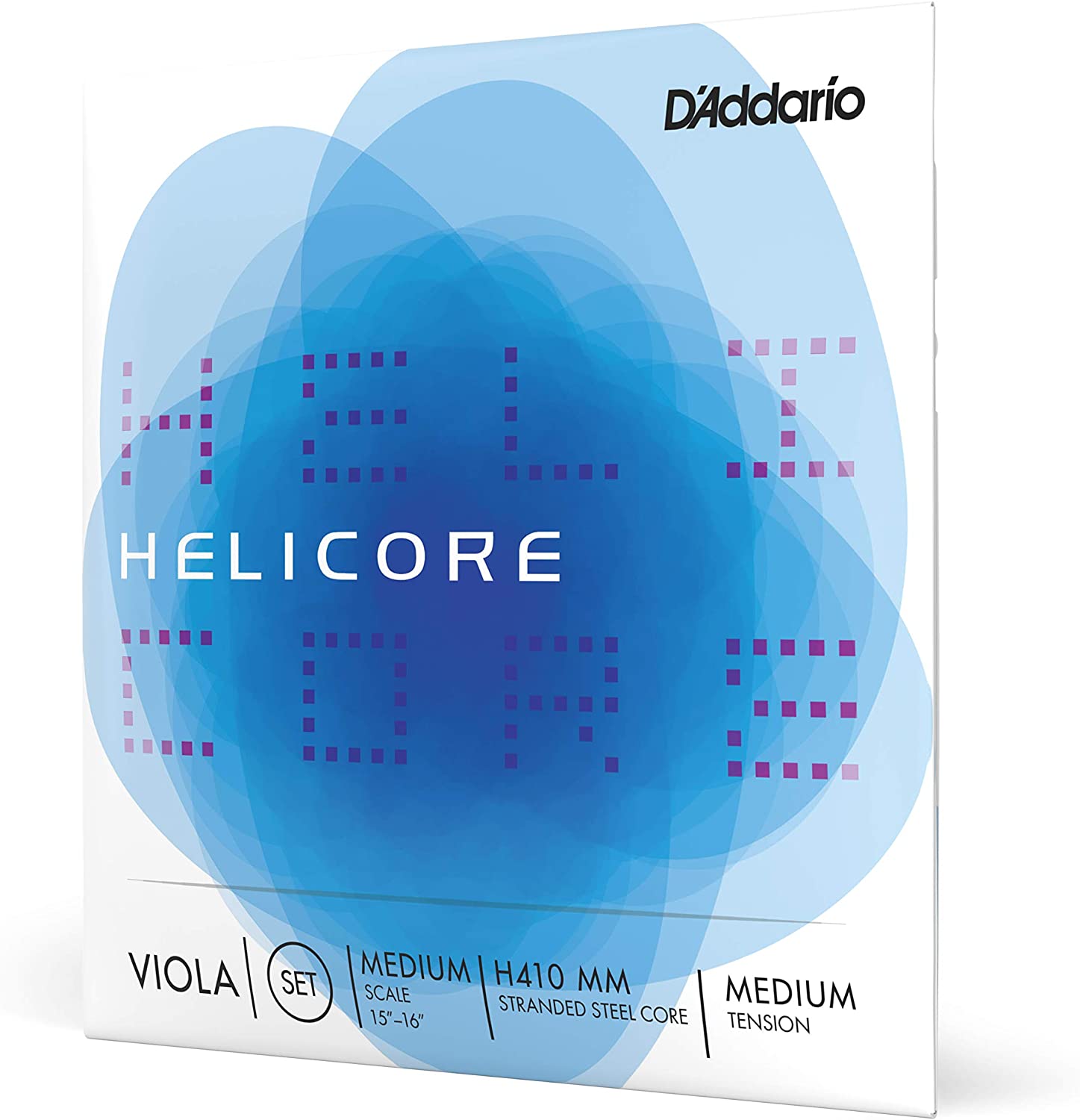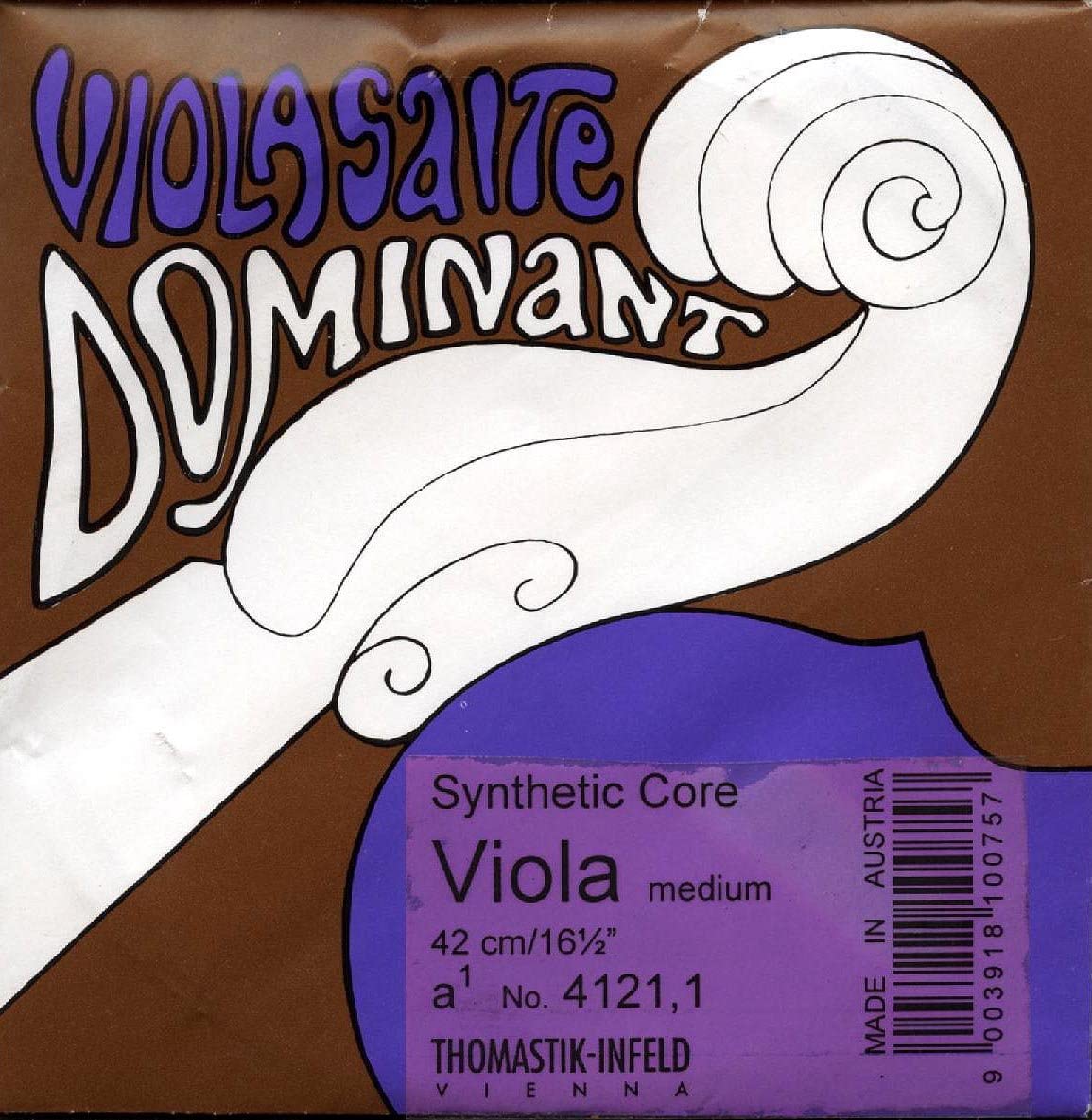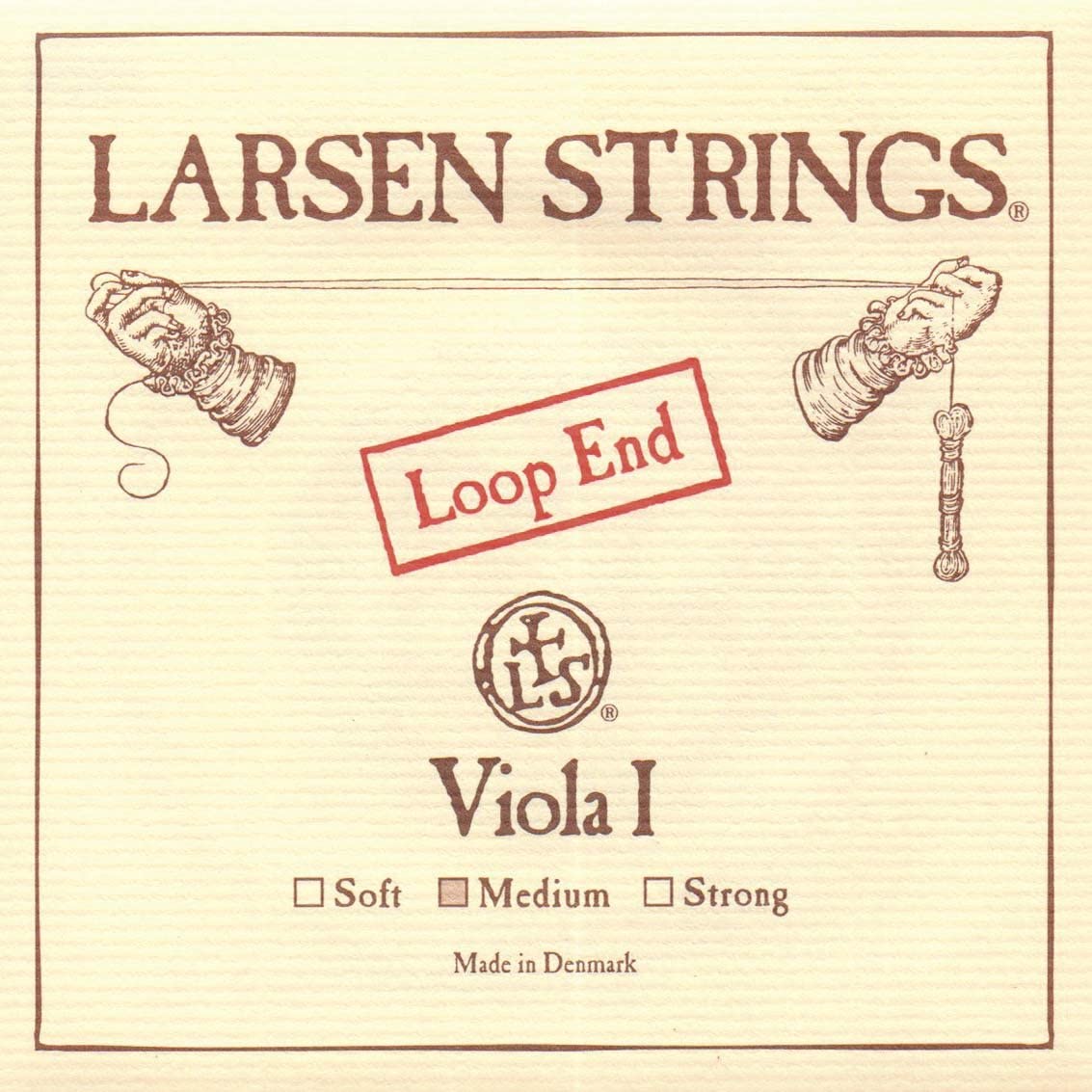- How to Find the Best 5 String Violins - April 21, 2022
- How to Hold a Violin Bow - April 21, 2022
- How to Hold a Cello Bow - April 17, 2022
Summary: Knowing how to find the best viola strings means picking strings that fit the physical size of your instrument and match your musical skills.
Knowing how to find the best viola strings can be as difficult as knowing how to find the best viola. Finding the right strings lets you play to your fullest potential and hone your musical skills.
With the right guidance, you can choose from several types of viola strings and pick based on your skill and instrument.
Unique Needs of Violists
A viola needs strings that physically fit the instrument and produce the beautiful, higher sounds of viola. As a viola player, you need strings that match your skillset.
| Beginners | As a beginner, you need strings that respond to your basic arm movements so that you can focus on the physical part of playing the viola. |
| Intermediates | As an intermediate, you need strings that help you refine your sound and technique. |
| Advanced | As an advanced player, you need strings that offer more distinct clarity changes and complex overtones so that you can control sound, quality, volume, and projection on stage. |
Are Viola and Violin Strings the Same?
Violin strings and viola strings are tuned differently.
- Violin strings are tuned with G as the lowest string and E as the highest. So, the strings are one-fourth down from one another.
- Viola strings are tuned with C as the lowest string and A as the highest, so they are one-fifth lower than the violin
| Violin tuning | G, D, A, E |
| Viola | C, G, D, A |
However, the materials available and the major manufacturers are the same for both violins and violas.
Types of Strings to Consider and Which, if Any to Avoid
For violas, you have the same three types of strings as violins:
- Gut and gut core
- Synthetic
- Steel core
All three are made from different materials and these materials impact the sound produced and to a lesser degree how easily you can play.
Gut Strings
Gut strings are, as the name suggests, made from the gut. They are the oldest form of viola string. Gut strings are not as responsive as synthetic strings, so you need to have good techniques to use them, which is why they are reserved for advanced and professional musicians. The natural gut material absorbs moisture in the air (just like your gut does in your body). This means if you are sitting under hot stage lights or playing in a humid environment, your strings will absorb the excess moisture, get heavy, and fall out of tune. So, you must tune in regularly. As a beginner, this is not something with which you should struggle.
Steel Strings
Steel strings are made with a steel core. They usually have different wrappings wound around that core, made of other materials like copper, gold, or silver. For this reason, steel strings usually produce a slightly tinier, or metallic sound compared to your other two options. This makes them perfect for metal, rock, Christian rock, jazz, bluegrass, or similar genres. Steel core strings are usually smaller in diameter than the other two, so their tone is more focused, and they respond better to your bow movements. If you play the electric viola, or you use any type of amp system for performances, steel strings are likely the best fit. Steel will last longer than gut and will not need to be tuned every time the weather turns.
Below is a quick review of a popular type of steel core string used by students and professionals:
Synthetic Strings
Synthetic strings are the newest string for violas. These are sometimes called “dominant” strings after the brand that first developed them. Thomastik-Infeld Dominant viola strings are handcrafted for violas. This brand provides the same benefits as gut strings but without the hassle of strings falling out of tune. You can find viola strings that are for beginners through professionals, in sets or by the string, and for soloists or ensemble members.
Synthetic strings are made of nylon. They will not offer complex overtones or a range of finely controlled features, but they are ideal for beginners. Synthetic strings last longer, they keep their pitch, so you do not have to stop and tune after every practice, and they let you focus on developing the right form while you play.
| String Type | Gut Strings | Synthetic | Steel |
| Who should use them | Advanced players | Beginners | Intermediate |
| Which type of music | Classical | Any type of music | Jazz music and country |
| Pros | Provides complex overtones | Stable pitch
Do not break as easily as gut |
Maintains stability
Finer control over timber and tone |
| Cons | Falls out of tune often especially in the heat | Not a lot of variety for sound quality | Can give a metallic tone |
If you want to change your strings, check out this video on the right way to do it:
Do Viola String Wrappings Matter?
When you compare viola strings, you will notice that descriptions include information on “wrappings” or “windings”. This refers to the material physically wrapped around the core.
This plays a smaller role in determining the sound you get when you play. Steel strings, for example, are often wound with gold, silver, or aluminum. These wrappings change the vibrations and fiction between your viola strings and your bow. Gut strings are often wound with things like gold, silver, or copper for the same reasons.
When I was new to the viola, I wanted to learn as much as I possibly could so that I could set myself up for success. So, I read all about strings and compared products and got caught up in the wrappings. I was brand new to stringed instruments. I did not even know how to change my strings yet, but I invested a lot in gut strings because they were “the best”. I even went as far as to purchase gut strings wound with gold because I was playing classical music and read that gold produced softer, warmer tones perfect for classical pieces.
It was a colossal failure. My strings never stayed in tune. A huge surprise has given that I practiced in a hot, humid classroom full of sweaty teenagers. What is more, I did not notice any sound improvement after my strings were changed.
Today I know that I did not hear a difference because I was not ready to hear a difference. I was barely able to hold my viola the right way, let alone stop and tune professional-grade strings.
So, take my advice, if you are a beginner, wrappings will not matter.
Now, if you are an intermediate player and you have a specific genre of music, then maybe consider moving toward steel core strings with special windings. You will have to buy a few different wrappings and try them out before you get the sound you want.
As a professional, pay attention to the wrappings. These can add a fractional change to the sound you produce, but a change that only a well-tuned ear will appreciate. At this level, of course, do not forget to invest in complementary accessories.
For example: If you are buying gold-wrapped strings, get gold-infused rosin.
Does Gauge Matter with Viola Strings?
While you are looking at strings, you might read stats on the gauge. Gauge is the thickness of the strings.
Thicker strings will need higher levels of tension to keep them in tune. This means they will not respond as easily to your movements, so you have to work a bit harder at your technique to get the same sound. However, the upside is that thicker strings give more volume so if you are part of a group and need your viola to be heard equally with other instruments, thicker gauge strings are better.
Thinner strings by comparison are more responsive to your movements so they are better for beginners. The thinner gauge means heightened clarity but at the expense of volume. If you are a soloist or in a small quintet, these might be the perfect volume.
| Thick Strings | Better for ensembles. Produce fuller sound. Less responsive. |
| Thin Strings | Heightened clarity. Easier to work with. Less sound. |
Just like Goldilocks, a medium gauge is usually best for a viola. But try different gauges before you decide the one you want to use full time.
Top Viola Strings
That said, there are some top manufacturers you should consider when learning how to find the best viola strings.
D’Addario Helicore Viola Strings
Comes in many sizes and gauges. You can buy an entire set or just replace one string. If you are like me, you end up breaking one or two strings long before you must replace the entire set. So, being able to purchase individual strings is helpful. The flexible design is good for ensemble performers or soloists. The steel core means they are very responsive and versatile.
Pros
- Versatile strings for multiple skills levels
- Steel wound core
- Faster response times compared to most steel
Cons
- Smaller string diameter which not everyone likes
Pirastro Evah Pirazzi Gold Viola String Set
This is great for advanced players. If you do not want to deal with the hassle of the gut, then this Pirastro set is perfect. It will stay in tune in humid conditions and has slightly warmer tones than similar steel core strings.
Pros
- Chrome steel winding
- Dynamic range
- Rich overtones
- Synthetic multi-filament fiber core
Cons
- Steel core which may not produce warmer tones
Thomastik-Infeld – Dominant
Represents one of the most popular synthetic brands. They were the original creator, hence the name. This set is great for beginners and intermediates because they last a long time, they can be found in multiple sizes for different violas, and they are made from perlon, not nylon. I recommend Dominant for all synthetic strings.
Pros
- Synthetic core
- Good pitch stability
- Quality sound for beginners
- Comes in many lengths and gauges for different sized violas
Cons
- Only available in synthetic
- Limited overtones
Larsen
Intermediate and advanced players might also like the Larsen line of viola strings. I normally use Pirastro, but I have played one instrument with the Larsen strings and was surprised by the rich sound.
Pros
- Clear tone
- Rich overtones
- Long-lasting
Cons
- Meant for advanced players
- Sold individually
In Conclusion
In conclusion, finding the best viola strings comes down to finding strings that fit your instrument and are made from a material that best shows off your skills. As you first start, basic synthetic strings will work well in helping you focus on your technique. As you advance, learn to read music better, and position your bow, then steel and gut strings can complement your skills. There is no right or wrong answer, just what works best for your situation and your instrument.
FAQ
Answer: When you buy viola strings, make sure they match the size of your instrument. You need to measure the back of your viola (but do not measure the end button, the neck, or the scroll on top). Violins and cellos come in standard sizes, so their strings are standardized as well. However, for full-sized violas, you will not find standard sizes. So, it is up to you to measure and find strings that physically fit.
Answer: If you have a ½ viola, then 4/4 violin strings are usually the same length (32.5 cm). The same is true for a ¼ sized viola and ¾ sized violin strings. However, you should complement the violin strings by ensuring your lowest string, the C string, is a viola string. If you have a ¾ viola, then you might be able to get away with 4/4 violin strings if they are the same 32.5 or 34.5 cm size. The length of your strings needs to fit the viola’s saddle. The tension will differ between viola and violin strings, but this is something you can control by adjusting all your strings so that the tension matches.
Answer: How often you change is based on how often you play the viola. If you practice and play regularly, you should change your viola strings every 3-6 months. If you play only once or twice per week, you can change them once per year. If you just purchased a used viola or you are renting a viola, you might want to change strings just because you do not know when they were last changed.
For more interesting readings check out:








